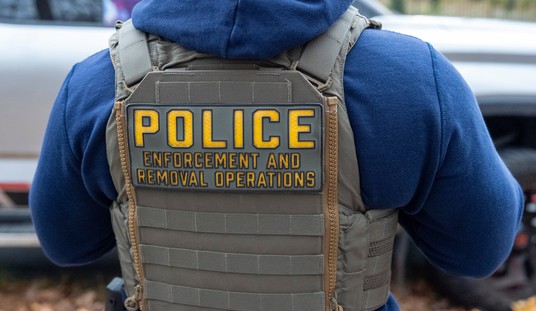China’s recently completed Hongqi Bridge – one of the tallest in the world at over 2,050 feet above the river – partially collapsed Tuesday, sending massive plumes of smoke into the air and concrete blocks tumbling to the ground below. Luckily, authorities had noticed anomalies and had cleared the area, and there were no injuries.
The bridge, however, which connected China with Tibet, was certainly left in bad shape.
Watch:
Why can't we build beautiful bridges in a few m9nths, like Chiana?
— Saul Montes-Bradley (@Debradelai) November 12, 2025
Ask a chorus of imbeciles on X almost daily.
Because we build them to last, cretins.
Another triumph of Socialism! The Hongqi bridge in Sichuan did not make it to its first birthday.
pic.twitter.com/R85W8EJPVv
It appears a landslide may have caused the disaster:
Authorities said the 2,487-foot-long Hongqi Bridge, which connects Sichuan province with Tibet as part of a national highway, was closed on Monday after cracks began to appear on nearby slopes and roads in the mountainous region.
On Tuesday, a landslide caused the bridge to fracture and collapse, according to officials in the Sichuan city of Ma’erkang, also known in Tibetan as Barkam.
While the collapse raises questions about the construction of the bridge – and if any shortcuts were taken – it also shines a light on China’s Belt and Road Initiative (BRI), where they have been building infrastructure projects throughout Latin America and the Caribbean, among other areas around the globe. China presents itself as a benevolent force with these efforts, but critics and China hawks argue that they’re merely trying to expand their global influence and cause third-world countries to fall into crushing debt with the CCP.
Writer Sarah Anderson has been filing her “Tracking China in the Americas" series for our sister site PJ Media, and she noted Tuesday how the Hongqi disaster could spell trouble for other BRI projects:
You may be thinking: This happened in China. What does it have to do with the Western Hemisphere? Well, let's just say that China's disastrous projects don't stay in the homeland...
And that's the problem. China has its heavy Communist hand in infrastructure projects across Latin America and the Caribbean, largely through its Belt and Road Initiative (BRI). It's invested billions in dams, ports, railways, and highways, often in exchange for access to resources, diplomatic leverage, or debt that strains entire economies. But like [Secretary of State Marco] Rubio said — and like the falling of that bridge today shows — the work is not necessarily high-quality and is often problematic, if these state-owned companies even bother to finish it.
"...they don't hire you. They bring their workers in to do all the work or they want you to borrow a bunch of money, and then they hold it over your head. - @SecRubio @marcorubio on China in the Western Hemisphere https://t.co/bpPP0GsiIl
— SarahDownSouth (@SarahDownSouth) November 12, 2025
She goes on to list numerous projects – like Venezuela's Tinaco-Anaco High-Speed Railway - that are either experiencing problems or were simply never completed. Her chilling conclusion?
What starts as a flashy project that gets everyone excited often ends with poor workmanship, environmental destruction, corruption, and debt that leaves these nations vulnerable. The collapse of the Hongqi Bridge is a symbol of the type of cost-cutting infrastructure disasters that China exports to our hemisphere.
While China is going to have its hands full cleaning up after this mess – and figuring out what went wrong – the catastrophe is certain to sound the alarm on other BRI projects. Be careful what you say “yes” to.
Editor’s Note: After more than 40 days of screwing Americans, a few Dems have finally caved. The Schumer Shutdown was never about principle—just inflicting pain for political points.
Help us report the truth about the Schumer Shutdown. Use promo code POTUS47 to get 74% off your VIP membership.















Join the conversation as a VIP Member